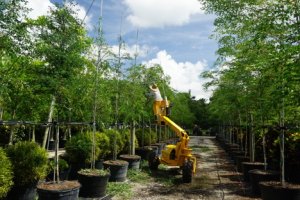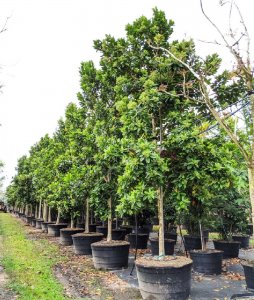Tree Pruning is what makes them look neat and more attractive, and also enhances growth, health and strength. But before picking up your pruning shears and hand saw, consider the objectives you wish to achieve.
Pruning Mistakes to Avoid: Practical Tips
First priority should be given to the removal of dead, broken, deformed or diseased branches, followed by tree branches which are over or touching utility lines, obstructing the view along a driveway or are growing too close to a structure. Some gardeners prefer to leave it at that and allow the tree to express its natural growth form. If you decide to go farther, thinning of the crown is another option. This will allow more light to penetrate to the garden floor and at the same time diminsh the wind force of tropical storms through the tree crown and reduce potential damage of branch breakage.
The foregoing suggestions are to a large extent everyday measures, and should be done before any aesthetic pruning. To begin pruning for aesthetic reasons before addressing these more practical actions is a mistake. It is also a good idea to look at published pictures of the tree you intend to prune to gain an idea of what it looks like in a natural setting and when carefully pruned; this will provide a model to follow.
Tree Pruning Basics
Pruning to achieve a more attractive crown form or appearance is an optional management practice. It may be done to prune the tree crown into a more attractive and uniform shape, and at the same time include removal of low- growing branches to open up the garden ground level to plant a flower bed or flowering shrub. Among the keys to good pruning include the 1⁄3 and 1⁄4 rules: don’t prune up from the ground more than 1⁄3 of the tree height and don’t prune away more than 1⁄4 of the crown. Other keys include not pruning trees for height as it can affect overall growth and health; regularly prune only once a year, preferably in the fall or winter season when growth is least; and prune as little as possible to achieve the desired look.
Practical pruning tips consist of the following. When cutting a branch, make a cut on the underside to prevent the branch from cracking close to the supporting branch or trunk. Be careful in cutting larger branches to leave intact the branch collar. When shortening smaller branches, cut at a lateral branch or 1⁄4 inch beyond a bud growing outward.
If pruning diseased branches, disinfect pruning tools afterward with rubbing alcohol. In pruning conifers remember that they only produce new shoots from green wood, if you prune beyond it no regrowth will take place. This is especially important with hedge plants. Hedge plants need to be pruned more than once a year, whenever they become ragged in appearance. In caring for monocots such as palms and cycads, prune only deformed, dead or dying leaves; excessive leaf removal will adversely affect plant growth and vigor. It is not harmful to prune away palm inflorescences to avoid the mess and litter of fruit drop.
If you’re looking for a specific tree or shrub, contact us for further information.
You may also like our article: How to prune trees.






Post a comment